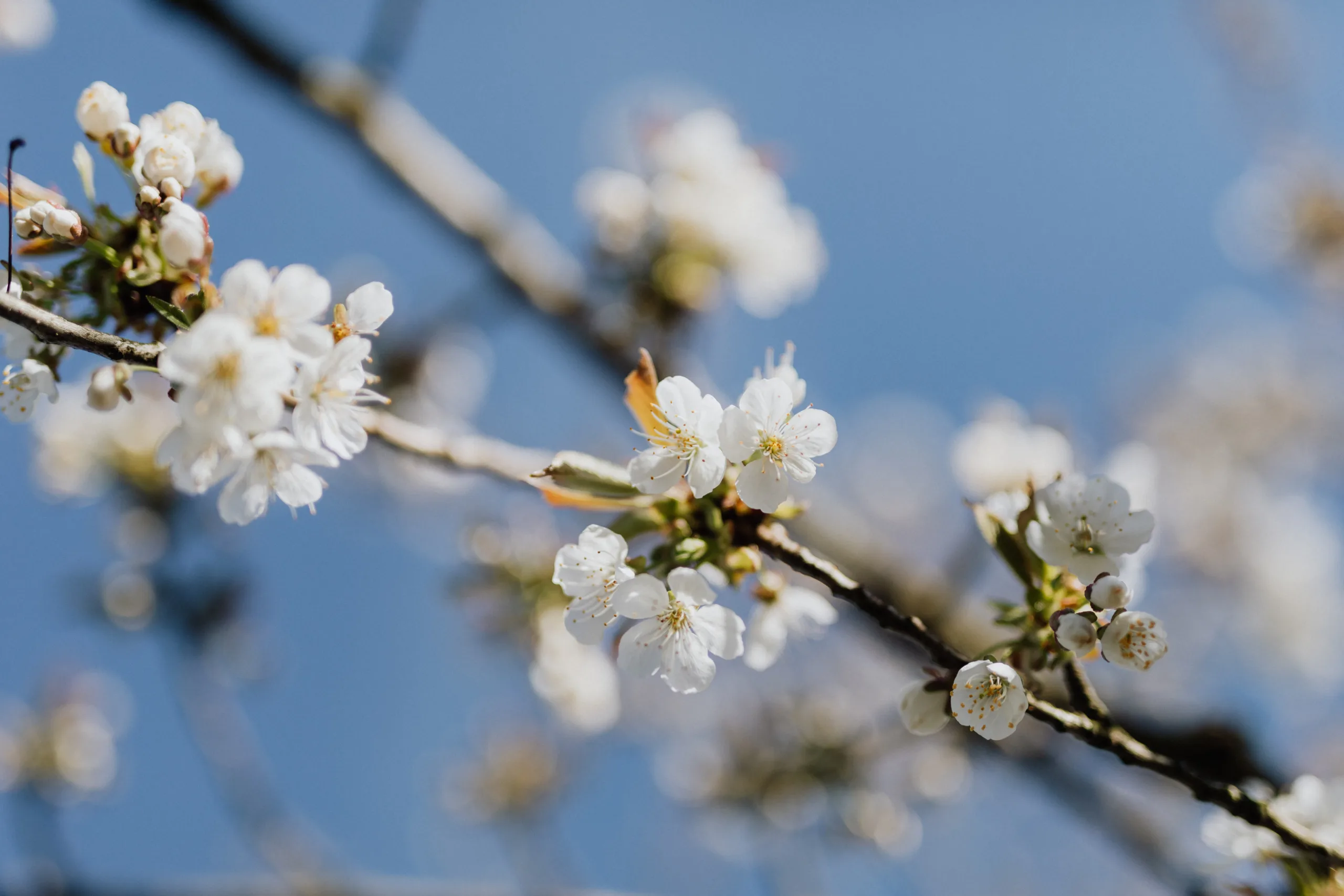Trees are one of the most important living organisms on Earth and they have always been a source of life and beauty to us. But have you ever wondered how do trees grow? Do trees grow towards the sun?
This article will dive into the science behind how and why trees grow towards the sun. We will explore the various theories that explain how plants and trees use the power of the sun to grow, as well as how this process is affected by different environmental factors. We will also look at how we can utilize this knowledge to help us create healthier, more sustainable gardens and landscapes. By understanding how trees grow towards the sun, we can make sure that our gardens are full of thriving plant life for years to come.
Yes, trees do grow towards the sun. This is because the sun provides the light and energy that trees need to grow and photosynthesize. The leaves of the tree act like solar panels, absorbing the light from the sun and turning it into energy for the tree to use. As a result, trees tend to orient themselves towards the sun in order to maximize their ability to absorb as much energy as possible.
Phototropism in Plants
Phototropism is a process that enables plants to turn or move in response to light. It is an important process in the growth and development of plants as it helps them to find and receive light for photosynthesis. Through phototropism, plants can orient themselves towards the source of light, enabling them to obtain maximum light for photosynthesis. Phototropism occurs when a plant receives an external stimulus such as light, which then triggers the release of hormones known as auxins. Auxins are produced at higher levels on the shaded side of a plant, causing the plant cells on that side to elongate faster than on the illuminated side. This unequal growth causes the plant to bend or move towards the source of light, a process known as positive phototropism. On the other hand, negative phototropism occurs when a plant moves away from a light source. This type of phototropism is usually observed in plants growing in areas where there is too much sunlight or heat.
In addition to its role in orienting plants towards a source of light, phototropism also helps with plant reproduction by influencing flowering and seed dispersal. Photoperiodism is one example of this; it refers to the way plants respond differently according to day length or night length. Short-day plants flower when days are short and nights are long while long-day plants flower when days are long and nights are short. Photoperiodism helps promote flowering in suitable conditions so that pollinators can transfer pollen between flowers for reproductive success.
Overall, phototropism is an essential process for plant growth and development since it enables them to orient themselves towards sources of light for photosynthesis as well as reproduction. Without phototropism, most plants would not be able to survive since they would not be able to obtain enough energy from sunlight for their survival needs.
Phototropism
Phototropism is a biological phenomenon that describes the response of an organism to light. It is a type of tropism, or directional growth, which involves the movement of entire organisms or parts of organisms in response to an external stimulus. Plants are the most common example of this phenomenon, responding to light by growing in its direction. Phototropism is a response to directional light and helps plants grow towards a source of sunlight. As light intensity increases or decreases, phototropic responses become stronger or weaker, respectively. The phototropic response can be observed in many other organisms as well, such as animals and fungi.
In plants, phototropism is mediated by special hormones known as auxins which help regulate plant growth and development. Auxins are produced in the meristematic regions at the tips of stems and roots and move away from the source of light when exposed to it. This causes growth on one side of the plant to be inhibited while on the other side it is promoted; resulting in a curving motion towards the source of light. Phototropism is essential for plants to orient themselves towards light for photosynthesis and proper growth; without it they would not be able to capture enough sunlight for their needs.
Phototropism also plays an important role in seed dispersal by encouraging seeds to grow away from the parent plant into new areas where they can establish themselves without competition from nearby plants. The ability for seeds to detect and move towards or away from sources of light helps them reach suitable habitats for germination and growth. Phototropism also helps plants orient themselves towards sources of water as they search for moisture when soil dries out.
Overall, phototropism is an important phenomenon that allows plants (and other organisms) to adapt to their environment by detecting changes in luminosity and directing their movements accordingly. Without this ability, many life forms would struggle to survive due to inadequate access to resources like water and sunlight that are essential for their survival.
How Does Phototropism Affect Plant Growth?
Phototropism is the directional growth of a plant in response to light. It is a very important factor in the growth and development of many plants, as it helps them orient themselves towards the light source they need to survive. Light is essential for photosynthesis, which is a process that converts sunlight into energy for plants to use. This energy is then used to grow and develop, and phototropism helps plants orient themselves towards their light sources so they can maximize their energy intake.
Phototropism also affects the shape of the plant. When a plant grows in response to light, it will often bend or curve towards the light source. This can be seen in many common houseplants, where the stems will curl up towards any available light source. This helps the plant maximize its exposure to sunlight and also creates an aesthetically pleasing shape for the plant.
Light can also affect how quickly a plant grows, as well as its overall size. Plants that receive more intense light will generally grow more quickly than those that do not receive as much sunlight. Furthermore, plants that receive higher levels of direct sunlight may also have larger leaves and stems than those that are kept in shaded areas or indoors with artificial lights.
In conclusion, phototropism has a significant effect on how plants grow and develop by helping them orient themselves towards their light sources and maximizing their exposure to sunlight for photosynthesis. Phototropism also affects the shape of a plant by causing it to bend or curve towards its primary light source, as well as promoting faster growth and larger leaves due to increased exposure to direct sunlight.
Factors Influencing Phototropism in Plants
Phototropism is the growth of a plant in response to light. It is one of the most important factors influencing plant growth and development. Light acts as an environmental cue and plays a major role in regulating plant growth, development, and metabolism. There are several factors that influence phototropism, including light intensity, wavelength, direction, and duration.
Light intensity is one of the main factors influencing phototropism. Generally, higher light intensity leads to greater phototropic response from plants. This is because intense light provides more energy for photosynthesis and encourages plants to grow towards it. The type of light also plays an important role in phototropism. Different wavelengths of light can have different effects on plants; for example, blue light has been found to be more effective at promoting phototropic response than red or far-red light due to its higher energy content.
The direction of the light source can also influence phototropism in plants. Generally, plants tend to grow towards a source of light if it is coming from above them rather than from the sides or below them. This is due to the fact that plants are able to detect small differences in the angle of incoming light which helps them determine which direction they should grow towards in order to maximize their exposure to sunlight.
The duration of exposure to the light source can also affect phototropic response in plants; longer periods of time spent exposed will result in greater growth towards the source compared with shorter periods of time spent exposed. This is because longer periods allow for more photosynthesis and thus more energy for growth.
Overall, several different factors can influence phototropism in plants including light intensity, wavelength, direction and duration; understanding these factors can help us better control the environment surrounding our plants which can lead to healthier and more productive crops overall.

Effects of Light on Plant Growth
Light is one of the most important factors for the growth and development of plants. Its presence and intensity have a direct impact on photosynthesis, which is essential for plant survival. Light also plays a role in influencing the growth and development of stems, leaves, and flowers. A lack of light can result in weak, unhealthy plants with stunted growth and limited flowering potential. On the other hand, too much light can cause leaf scorch or other forms of damage. It is therefore essential to understand how light affects plant growth in order to ensure optimal conditions for healthy plants.
Light affects plant growth through both its intensity and duration. Generally speaking, more intense or direct light will result in more vigorous growth than dimmer or indirect light. The length of exposure also matters; short bursts of intense light will tend to produce faster results than longer periods at lower intensity levels. It is important to note that different types of plants may respond differently to the same set of light conditions. Some may require more shade while others may need full sun exposure to thrive; it is best to research a specific species before deciding on lighting conditions for its cultivation.
The effects of light on plants go beyond providing energy for photosynthesis; it also affects their morphology, physiology, development, productivity, and even their defense mechanisms against pests and diseases. Too much sunlight can lead to leaf burn or wilting due to excessive transpiration rates; too little light can cause weak stems that are unable to support heavy foliage or flower production. In addition, the spectrum of visible light can also have an effect on plant coloration or flowering patterns; some species prefer cooler temperature ranges with blue-ish hues while others may be suited for warmer ranges with redder tones.
In conclusion, understanding how different types of light affect plant growth is essential for successful cultivation. Different species will require different amounts and types of lighting depending on their specific needs; research is key when deciding on optimal lighting conditions for a particular type of plant. Once the correct amount and type are determined, regular maintenance must be done to ensure that these parameters are kept within acceptable levels in order to provide the best environment possible for healthy growth and development over time.
The Role of Auxins in Phototropism
Phototropism, the movement of a plant in response to light, is an essential process for the health and growth of plants. This response is driven by hormones called auxins, which are produced by the plant and then move throughout the plant. Auxins play a role in various aspects of plant development and growth, including phototropism. In phototropism, auxins move away from the side of the plant exposed to light and accumulate on the other side, causing a curvature of the stem or root that brings more leaves or roots into contact with light. This process is what allows plants to grow upright and ensures their survival.
Auxin movement is also important for regulating how much light reaches different parts of a plant. When one side of a plant is exposed to more intense light than another side, auxin tends to accumulate on the shaded side. This causes the cells on that side to elongate more than those on the brighter side, allowing them to capture more light from their environment and promote further growth. In this way, auxin helps regulate how much light reaches different parts of a plant, ensuring optimal growth conditions for each part.
The exact mechanism by which auxin controls phototropism is still being studied by scientists, but it has been suggested that auxin works by controlling proteins called PINs (protein-mediated polar transport proteins). These proteins are responsible for transporting other molecules between cells and can be activated or inhibited by changes in auxin concentration. It is believed that when one side of a plant is exposed to more intense light than another side, PINs become activated on that side and begin transporting auxins away from it towards the darker side. This causes an accumulation of auxins on the darker side that then triggers its cells to elongate in order to capture more light from its environment.
Overall, auxins play an important role in regulating phototropism in plants. Through its control over PINs and other molecules involved in cell elongation, it helps ensure optimal growth conditions for each part of a plant by allowing them to capture appropriate amounts of light from their environment.
Do Trees Grow Away from the Sun?
It is a common misconception that trees grow away from the sun. While it is true that trees can be found growing in shaded areas, they still rely heavily on sunlight for photosynthesis. Without adequate sunlight, trees will not be able to produce the energy needed to grow and survive. So, while trees may be found growing in shady areas, they are still dependent on sunlight for their growth and survival.
The amount of sun that a tree receives does affect its growth pattern; however, the direction of growth is not determined by the sun. Trees rely on other environmental cues such as gravity, wind, and soil composition to determine how they will grow. For example, if a tree is planted in an area where there is more wind on one side than the other, it will likely grow more towards the side with less wind resistance.
In addition to environmental factors, genetic traits also play a role in determining how a tree grows. Some species of tree can naturally grow towards the sun even when planted in shaded areas. This ability to grow towards sunlight is known as phototropism and is an adaptation for maximizing exposure to available light resources.
In summary, while trees may be found growing in shaded areas away from direct sunlight, this does not necessarily mean that they are growing away from the sun. Trees rely heavily on sunshine for photosynthesis and their overall growth pattern is determined by various environmental factors and genetic traits rather than just the position of the sun.

Conclusion
Trees growing towards the sun is a common phenomenon that can be observed in many different species of plants. This behavior is an adaptation to the environment, promoting photosynthesis and increasing the amount of sunlight that each plant receives. It has been studied extensively, with researchers uncovering many of the underlying mechanisms that contribute to this behavior such as auxin production, phototropism, and gravitropism. While it is certainly an interesting phenomenon, it must be remembered that all plants have different responses to their environment and may not always grow towards the sun. Therefore, it is important to consider other factors when attempting to understand a plants growth and behavior.
Overall, trees growing towards the sun is a fascinating and well-studied phenomenon that can be observed in many species of plants. An understanding of its underlying mechanisms will help us better understand how plants respond to their environment and how they are able to survive in their natural habitats.
Mark Hoffman is a dedicated arborist and tree care specialist with over a decade of experience. His love for trees began when he visited Yosemite National Park as a teenager and was awestruck by the giant sequoias. Mark pursued his passion by studying forestry at Michigan Technological University, where he earned a Bachelor of Science degree.
Since then, he has worked tirelessly in the field of arboriculture, helping to preserve and protect trees in his community. His expertise and dedication have made him a respected leader in the industry and a valuable resource for anyone seeking advice on tree care.
